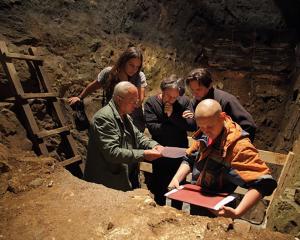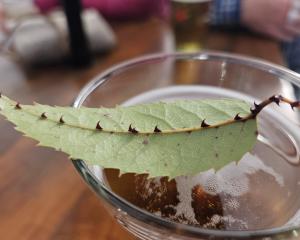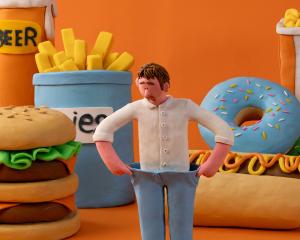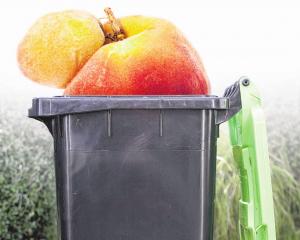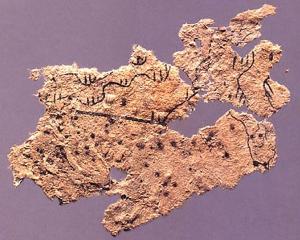Serendipity sees a new exhibition by photographer Alistair Guthrie on in Dunedin. Bruce Munro talks refugees, empathy fatigue and 2m-tall portraits with those bringing the multi-dimensional show to the South.
It was while debating refugee quotas with celebrated photographer Alistair Guthrie and his wife Astrid that journalist and refugee advocate Tracey Barnett hit on the idea of "Transplanted: Refugee Portraits of New Zealand''.
"Alistair said, 'What can I do to help?','' Ms Barnett recalls of the discussion held at the Guthries' Auckland home more than a year ago.
The dozen large photographs will be on display in the Dunedin Community Gallery, Princes St, for 10 days from Sunday.
Ms Barnett, an American-New Zealander who has reported from refugee camps on the Thailand-Myanmar border and from Australian asylum centres, was aware there was a side of the story that had not been told.
"When we first saw images of the body of the little Syrian boy washed up on the shores of a Turkish beach I think for most of the world it finally hit home, the millions of refugees that were affected,'' she says.
"But what we have seen is a compassion deficit and an empathy fatigue as the months have gone by. That narrative has changed and has gotten uglier.
"What we don't show, unfortunately, is the flip side of refugee lives. These are lives that have been pulled up by the roots. Everything they once knew is gone. But we don't really see the other side, when lives are regenerated. When new roots are put down in new soil.''
So, during the past 12 months Mr Guthrie - whose award-winning career was recently profiled in international photographers' magazine F11 - has been photographing former refugees now living in New Zealand.
The subjects have included octogenarian Holocaust survivors who have been awarded Queen's Service Medals, a toddler recently arrived from a Myanmar refugee camp, taxi drivers, a drag queen from the Maldives, an Oxford University-trained lawyer who worked in the war crimes tribunal...
The process has been "fabulous'', Mr Guthrie says.
"I like meeting people ... and these people sure have some stories. The cruelty of life is incredible ... It has reinforced for me that if enough people keep pushing, good prevails.''
The aim was to make the photos as simple as possible, he says. "Strip it back and let the people express themselves.''
Shooting in black-and-white helped achieve the related goal of presenting each person on a level playing field without the distractions and connotations of colour.
Each of the dozen portraits will be displayed as 2m-tall photographs.
"I'm a bit nervous about that,'' Mr Guthrie says. "They will be quite dominant, in your face. But I think that could be quite interesting, because something that size can be very powerful.''
Ms Barnett planned to premiere the exhibition in Auckland.
She had not started fundraising for that when she was asked to speak on refugee issues at the "Space, Race, Bodies II'' conference being held at the University of Otago this weekend.
She was also aware that Dunedin was poised to become the country's newest refugee resettlement city.
(Forty-nine Syrian refugees arrived in the city a fortnight ago.)
"I said, what the hell, I haven't got the money together yet, but is this something you'd be interested in?''
Max Reid, of Dunedin Welcomes Refugees, responded warmly to Ms Barnett's offer.
Mr Reid ran the idea past the Creative Dunedin Partnership - a joint Dunedin City Council and creative community group - which also was enthusiastic.
"It took on a life of its own after that,'' Mr Reid, whose full-time job is as chief executive of Kidney Health New Zealand, says.
"I'm particularly interested in how the arts ... can communicate with people at a different level. It struck me as a gentler way for people to connect with the idea of refugees coming here; that it is not as threatening as some people might think.''
Dunedin has a long history of refugees, he says.
"Whether you are talking Ngai Tahu or our Scottish forebears, these were people searching for something better who found a home here.''
Ms Barnett says the global compassion deficit she mentioned is not evident in New Zealand.
"I think New Zealand is a wonderful exception."
That has been typified by the generous reaction to the exhibition.
The university, city council, local businesses and volunteers are giving resources and time to make it happen.
"There is something incredibly powerful about a large image of a face that you fall into,'' Ms Barnett says.
"Where you see every nuance of the upturn of a mouth, of the smile-lines around the eyes, that takes away all the reductive elements of the refugee label ... The power of that is undeniable.''
See it and hear it
Transplanted: Refugee Portraits of New Zealand is on at Dunedin Community Gallery, Princes St, for 10 days from May 8.
There are 10 days of speakers and discussion on refugee issues, and "human library'' sessions where people can talk to refugees one-on-one.
www.wagepeacenz.org/2016/03/15/transplanted-refugee-portraits-of-new-zea...


